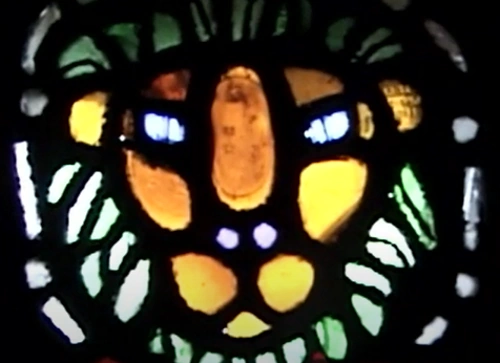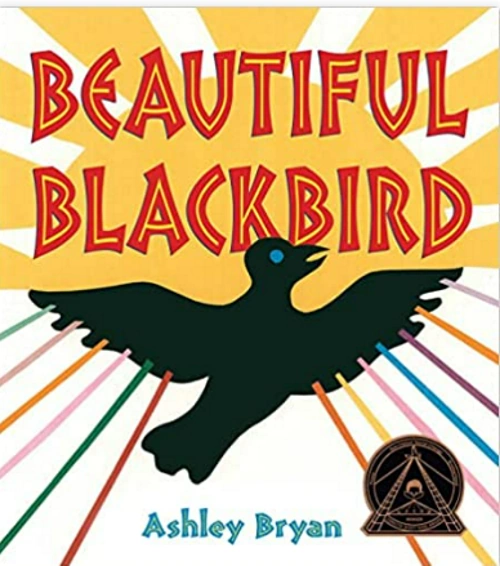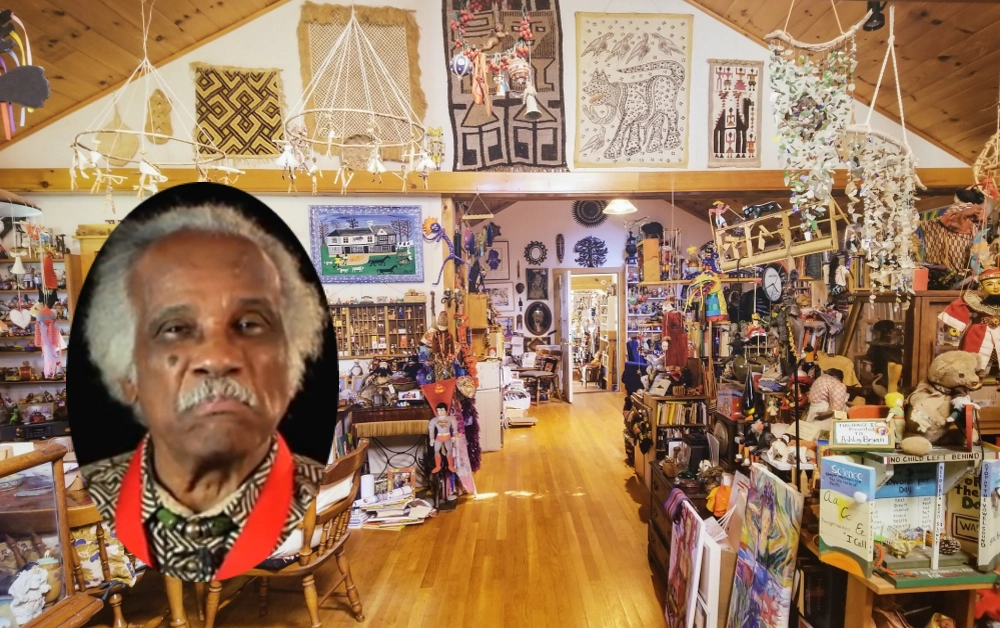Ashley Bryan was not what you’d expect living in the Cranberry Isles, a fishing community off Acadia National Park. Born in Harlem during the Great Depression, he came to the islands in the 1950s after surviving World War II. From that tiny Maine island, he spread a message of hope and joy through his art, his books and his puppets.
Bryan won many awards for his work, inspired theatrical productions and starred in a documentary about his life. In 2020, Maine Gov. Janet Mills named July 13 — his 97th birthday — “Ashley Frederick Bryan Day” for his contribution to the state.

Ashley Bryan
He wrote and illustrated books well into his nineties. His editor at Athenaeum Books, Caitlyn Dlouhy, explained his appeal.
“I just love that man,” she told Columbia Magazine. “He never has an unkind or negative word. It’s always, ‘Look at this beautiful thing. Look at this beautiful day. We’re alive’.”
His neighbors viewed him as a kind of holy man. But he didn’t think so.
“The artist is not a special person,” he once said.
Ashley Bryan
He was born July 13, 1923, the second of the six children of immigrants from Antigua. He grew up in a crowded apartment in the Bronx with his parents, siblings, three orphaned cousins and injured birds that his father rehabilitated.
As a child he drew on the walls, on the furniture, everywhere. His father worked as a printer of greeting cards, so he brought home paper for Ashley to draw on. As a kindergartner he made a book illustrating the letters of the alphabet. After that, he never stopped making books, he said.
His parents couldn’t afford art lessons, but sent him to free classes by Works Progress Administration artists. In 1940 he won acceptance to the Cooper Union School of Art and Engineering. There he studied sculpture, calligraphy, design, book illustration and painting. Then war broke out.

Untitled by Ashley Bryan
World War II
In 1943, Bryan got called up into the segregated 502nd Port Battalion for training as a stevedore. White Southern officers treated the black soldiers worse than the German prisoners of war. Bryan continued drawing, hiding his sketchbook in his gas mask. He unloaded supplies and ammunition from the ships that landed on Omaha Beach on D-Day.

Soldiers Playing Dice
Bryan sketched throughout his time in the military. Fifty years after the war, he took out his sketches and based paintings on them. He wrote.
Fifty years ago, those paintings would have been dark — grays and blacks. But in really looking at those sketches now, I saw a beauty there — the beauty of share human experience … so I would paint them in full color, filled with the vibrancy and life I had put into my garden paintings … This was a world they created, sheltered from the segregation and racism they endured.
For decades he had locked away his World War II drawings along with his memories. He finally dealt with the war — the most painful part of his past — in his art and in his book, Infinite Hope. He published it in 2019, at age 96.
Pablo Casals
After the war, he attended Columbia University’s School of General Studies, graduating with a degree in Philosophy. He then won a Fulbright scholarship to study art at the Université d’Aix-Marseille in Aix-en-Province.
In the summer of 1950, he travelled to the French town of Prades, where Pablo Casals ended his years of musical silence to protest Francisco Franco. Casals did it with a concert on the 200th anniversary of Johann Sebastian Bach’s death.
Bryan had to draw quickly to capture the musicians’ movements, he later wrote.
The intensity of this type of drawing gave me a sense of the rhythm of the hand … the spring from which my art grows.
He returned to Europe again to study art for two years at the University of Freiburg in Germany. He’d always loved German poetry, and memorized English translations of Rainer Maria Rilke’s poems. He wanted to go to Germany to hear the poems in their original language.
Ashley Bryan in Maine
Bryan was studying at the Cooper Union Art School when he won a scholarship to the Skowhegan School of Painting and Sculpture in Central Maine. He returned 10 years later, part of a group of artists chosen to paint murals on the South Solon Meeting House nearby. Bryan likely painted Skowhegan Pines during that visit.

Skowhegan Pines
Bryan went to Acadia National Park and the Cranberry Isles during his stay at Skowhegan. Then in the 1950s he moved to Islesford on Little Cranberry. During the school year he taught art in New York City.
He then joined the faculty of Dartmouth College in 1974, and spent summers in Islesford until his retirement in 1988. Then he moved there full time and began a period of intense productivity, inspired by the sea, the sky and the wildflowers.

He created stained-glass windows from sea glass, which hang in the Islesford Congregational Church. And he made puppets from papier mache and found objects like fishermen’s gloves, mussel shells and peach pits.
Ashley Bryan also painted — mostly the flowers that grew in profusion on Little Cranberry. “There was beauty to be joyfully captured,” he said. “Beauty to sustain me.”

Bryan’s studio in Islesford
Beautiful Blackbird
Bryan began publishing in the mid-1960s by illustrating books: Fabliaux: Ribald Tales from the Old French and Black Boy by Richard Wright. In 1965 he read a magazine article about the dearth of books featuring black children. It inspired him to celebrate black heritage through children’s books.
Bryan pioneered the children’s book genre based on African and Caribbean folk tales. He based many of his stories on a 1933 book, Folk-Lore of the Antilles, French and English. He also illustrated volumes of poems by Rabindranath Tagore, Langston Hughes, Paul Laurence Dunbar, Christina Rossetti, Nikki Giovanni — and himself.
“I love to celebrate the artistry of people around the world in whatever material or form they work,” he said.
Bryan found a story from Zambia about a beautiful blackbird. Different colored birds get together to decide which is the most beautiful. They decide on the blackbird, which reflects all colors. The other birds then want some black. So Blackbird marks them with his black feather, but tells them beauty comes from within.

“i had grown up with black as a lousy color,” Bryan said. “Here was a story celebrating black.”
Beautiful Blackbird remained one of Bryan’s favorite books. It also won the Coretta Scott King Award.
In his nineties, Ashley Bryan published seven more books.
Recognition

Bryan’s house in Islesford
The town of Islesford named its one-room schoolhouse after him, the first in Maine named for a visual artist and for an African-American. But he won many other awards, including the Laura Ingalls Wilder Medal and the Carter G. Woodson Book Award. The New York Public Library named him a Literary Lion and the Broward County Library named a children’s book author and illustrator series for him. A library in Kenya is named after him.
Ashley Bryan died on Feb. 4, 2022 in Sugar Land, Texas, at the home of his niece.
Images: Paintings courtesy the Ashley Bryan Center via The Farnsworth Art Museum.
